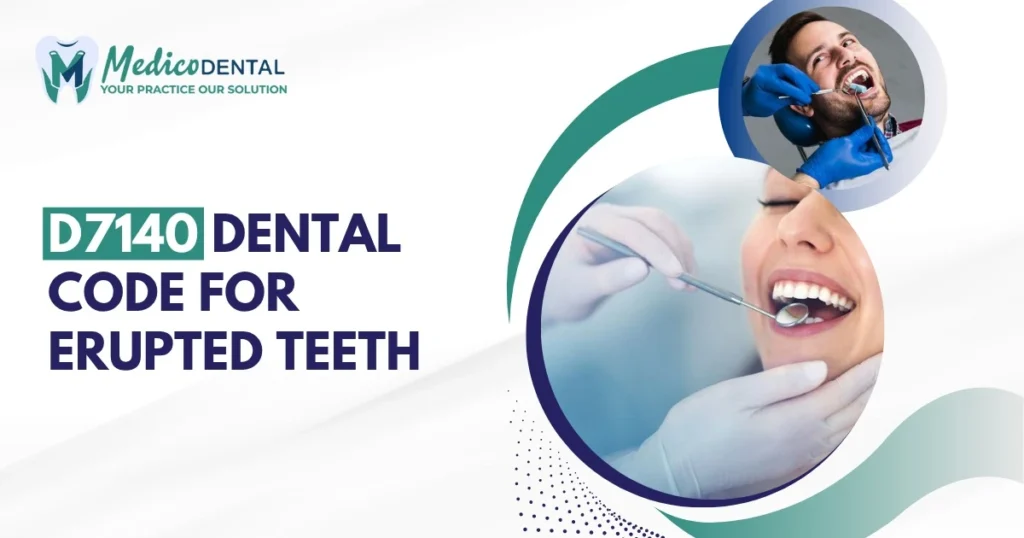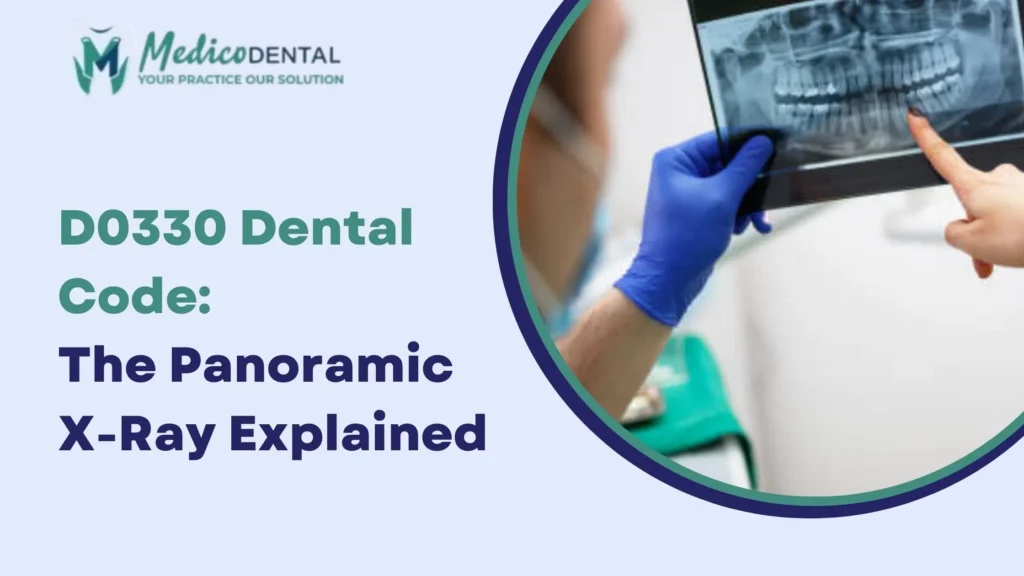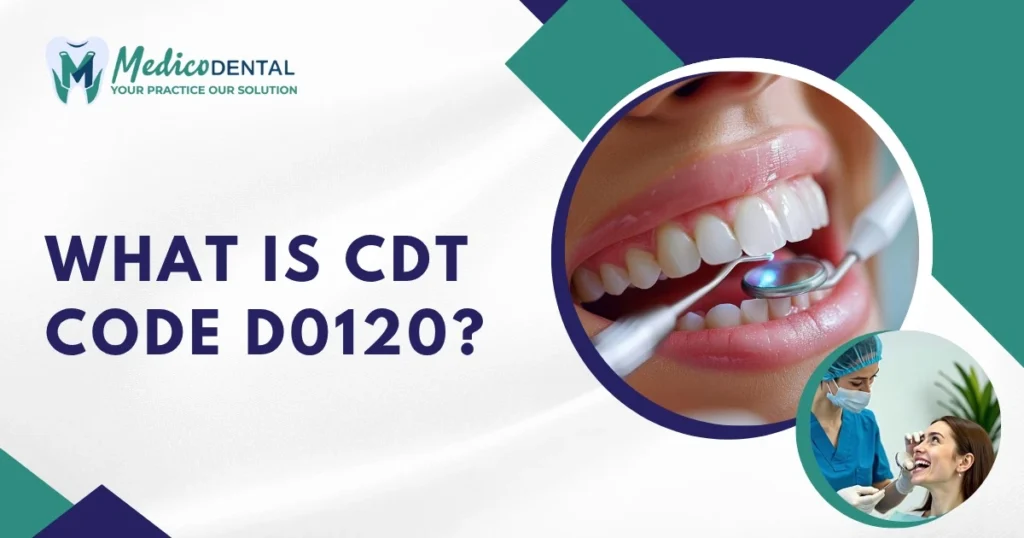In the field of dental care, precise documentation and correct coding are vital for both treatment accuracy and smooth billing operations. Among the many CDT codes used by dental professionals, D7140 Dental Code is one of the most frequently applied. It identifies a simple extraction procedure performed on a tooth that has fully erupted or on an exposed root that can be removed without surgical intervention.
This procedure is typically straightforward, involving only elevation or the use of forceps, and is often required when a tooth is damaged, decayed, or no longer viable. While the clinical aspect of D7140 is relatively simple, its correct use in billing is critical. Proper coding ensures clear communication between providers and insurance companies, prevents claim errors, and supports accurate reimbursement. Understanding the correct application of D7140 helps dental professionals maintain both regulatory compliance and the financial health of their practice.
Overview of D7140 Dental Code
D7140 Dental Code refers to the extraction of an erupted tooth or an exposed root, typically performed using elevation and/or forceps. This code is part of the Current Dental Terminology (CDT) system, which helps dental professionals and insurance providers maintain accurate documentation and billing for dental procedures. D7140 applies when a tooth is fully erupted or when the root is visible and can be removed without the need for surgical intervention.
This procedure is one of the most common in general dentistry and is often carried out due to decay, damage, or orthodontic requirements. The extraction process under D7140 is considered a simple extraction, as it does not require the removal of bone or sectioning of the tooth.
Importance of Correct Coding in Dental Billing
Accurate coding plays a critical role in dental billing and insurance claims. Using the correct CDT code ensures proper reimbursement and prevents claim denials or delays. Misusing D7140 for instance, when a more complex surgical procedure has been performed can lead to rejected claims or compliance issues.
Correctly identifying and documenting D7140 not only supports transparency between dental providers and insurers but also reflects the professionalism and reliability of the dental practice. Accurate coding also helps maintain clear patient records and contributes to smooth revenue cycle management.
Understanding Dental Code D7140
Definition and Meaning of D7140
The CDT Code D7140 is officially defined as:
“Removal of tooth, erupted or exposed root (elevation and/or forceps extraction).”
This code applies to cases where the tooth to be removed is visible above the gum line or has an exposed root, making it accessible for a non surgical extraction. It does not involve cutting into the bone or sectioning the tooth, which distinguishes it from more complex surgical extraction codes.
D7140 procedures are usually performed under local anesthesia, and the recovery time is relatively short compared to surgical extractions.
Description of the Procedure Covered by This Code
Under D7140, the dentist numbs the area around the affected tooth with local anesthesia. The dentist then uses specialized dental instruments such as elevators and forceps to loosen and remove the tooth or root fragment.
The goal is to remove the tooth as gently as possible to minimize trauma to the surrounding bone and gum tissue. In most cases, stitches are not required, and the socket heals naturally over time. Patients are typically advised to follow standard post extraction care, including rest, avoiding hard foods, and keeping the area clean.
When to Use D7140
Situations Where This Code Applies
The D7140 code should be used when a tooth is fully erupted or the root is visible and can be removed without surgical procedures. Common reasons for this type of extraction include:
- Irreversible damage caused by tooth decay.
- Fractured or broken teeth that cannot be restored.
- Overcrowded teeth that need removal before orthodontic treatment.
- Periodontal disease leading to loosening of the tooth.
The key point is that the extraction must be simple and non surgical, involving elevation and/or forceps removal only.
Common Dental Cases and Conditions
Some common examples of when D7140 is used include:
- Removing teeth that are too damaged for root canal therapy.
- Extracting a tooth for denture preparation.
- Extracting a visible tooth prior to implant placement.
- Removing an erupted tooth affected by infection or trauma.
If the procedure involves removing bone, sectioning the tooth, or making incisions into the gum tissue, the D7210 code (surgical extraction) should be used instead. Using the proper code ensures accurate documentation, insurance compliance, and fair reimbursement.
The D7140 Procedure Explained
Step by Step Process of the Extraction
- Examination and Diagnosis: The dentist first examines the tooth using X rays to assess its position and the surrounding bone structure.
- Anesthesia Administration: Local anesthesia is applied to numb the area around the affected tooth.
- Tooth Elevation: The dentist uses a dental elevator to loosen the tooth from the socket gently.
- Forceps Removal: Once loosened, dental forceps are used to grasp and remove the tooth or exposed root.
- Post Extraction Care: The dentist places sterile gauze over the socket to control bleeding and may provide aftercare instructions, such as avoiding hard foods and maintaining oral hygiene.
This process is generally quick and performed in a single visit. Most patients experience minimal discomfort and can return to normal activities within a day or two.
Instruments and Techniques Used
The primary tools used in a D7140 extraction include:
- Dental elevators – to loosen the tooth from the surrounding bone and ligaments.
- Extraction forceps – to grasp and remove the tooth once it is loosened.
- Gauze and suction tools – to manage bleeding and maintain a clean work area.
Since D7140 represents a non surgical extraction, it does not involve the use of surgical burs, bone removal instruments, or sutures. Proper technique is essential to avoid complications such as root fracture or damage to adjacent teeth.
Billing and Insurance Details
How D7140 is Billed
When billing for Dental Code D7140, it’s important to document the procedure accurately and align it with the patient’s clinical notes. This CDT code applies strictly to non surgical extractions, meaning no bone removal or tooth sectioning was performed. The billing record should include details such as the tooth number, reason for extraction, and any supporting X rays or clinical notes.
Most insurance providers recognize D7140 as a standard dental extraction and reimburse it under basic restorative or oral surgery benefits. However, the exact coverage depends on the patient’s dental insurance plan, the provider’s participation with the insurance network, and the specifics of the dental contract.
Typical Insurance Coverage and Cost Factors
Insurance typically covers D7140 when the extraction is deemed medically necessary, such as for decayed, fractured, or orthodontically required teeth. The patient’s out of pocket cost may vary based on deductibles, co payments, and whether the provider is in network or out of network.
Several factors influence the overall cost of a D7140 extraction, including:
- The location of the dental practice (urban vs. rural pricing).
- The complexity of the tooth’s condition and extraction.
- Whether additional services (like X rays or anesthesia) are included in the same visit.
Dental practices should always verify benefits before treatment to avoid misunderstandings and ensure accurate billing for both the clinic and the patient.
Related Dental Codes
Difference Between D7140 and D7210
While D7140 refers to the extraction of an erupted tooth or exposed root using simple methods, D7210 is used when the procedure involves surgical removal. D7210 covers cases where the dentist must remove bone or section the tooth to complete the extraction.
The key distinction lies in the complexity:
- D7140: Non surgical extraction using elevation or forceps only.
- D7210: Surgical extraction requiring bone removal, sectioning, or incision of soft tissue.
Accurately choosing between these codes ensures proper billing and helps avoid insurance disputes or claim rejections.
Other Similar CDT Codes and Their Applications
Other CDT codes related to tooth extraction include:
- D7111: Extraction of a primary (baby) tooth, performed using elevation and/or forceps.
- D7220: Removal of an impacted tooth that requires soft tissue incision only.
- D7230: Removal of an impacted tooth that requires bone removal and/or sectioning.
Each of these codes represents a specific level of procedural complexity. Using the correct CDT code allows for precise documentation and ensures that insurance reimbursements align with the actual treatment performed.
Common Coding Errors to Avoid
Mistakes in Selecting D7140
One of the most frequent errors in dental billing is the misclassification of extraction types. Some providers mistakenly use D7140 for surgical extractions that actually meet the criteria for D7210. This can lead to claim denials or underpayments since insurers may review procedure notes and X rays to confirm the code’s validity.
Another common mistake is using D7140 when only a root tip or remnant is removed, which may instead fall under D7250 or another applicable code. Dentists and billing staff should carefully review clinical documentation before submitting claims to ensure proper code selection.
Documentation Issues Leading to Claim Denials
Incomplete or vague documentation is another major cause of insurance rejections. Each D7140 claim should include:
- Detailed procedure notes describing how the tooth was removed.
- X ray evidence showing the tooth’s position (erupted vs. impacted), often captured using the D0330 Dental Code for a panoramic film.
- Anesthesia details and any related procedures performed during the visit.
Without clear documentation, insurance providers may question the validity of the code, delaying reimbursement or triggering audits.
Best Practices for Accurate Coding and Billing
Tips for Dental Billing Professionals
To ensure accuracy and efficiency in billing for D7140 and similar procedures, dental billing teams should follow best practices such as:
- Verifying patient eligibility and benefits before performing extractions.
- Ensuring the clinical notes clearly support the selected CDT code.
- Attaching necessary documentation (e.g., radiographs, narrative notes) to claims.
- Regularly updating staff training on CDT code revisions and payer policies.
Maintaining good communication between clinical and billing teams also helps prevent coding errors and streamlines the reimbursement process.
Importance of Compliance with ADA Guidelines
The American Dental Association (ADA) provides official CDT coding standards that should be followed to maintain compliance and accuracy. Proper use of D7140 ensures adherence to these guidelines, which promotes consistency across dental practices and protects providers from potential audit risks.
Following ADA approved definitions and keeping records aligned with CDT updates each year helps maintain credibility and supports the financial integrity of the dental practice.
Conclusion
Summary of D7140 Importance
Dental Code D7140 serves as a cornerstone in dental billing and clinical documentation for non surgical extractions. Understanding its correct application not only ensures that patients are properly billed but also that the practice remains compliant with insurance and ADA standards.
Final Thoughts on Accuracy in Dental Coding
Accurate dental coding is more than just administrative it’s essential for maintaining trust between providers, patients, and insurers. By applying D7140 correctly, dental professionals can prevent claim denials, support fair reimbursements, and uphold the professional integrity of their practice.



